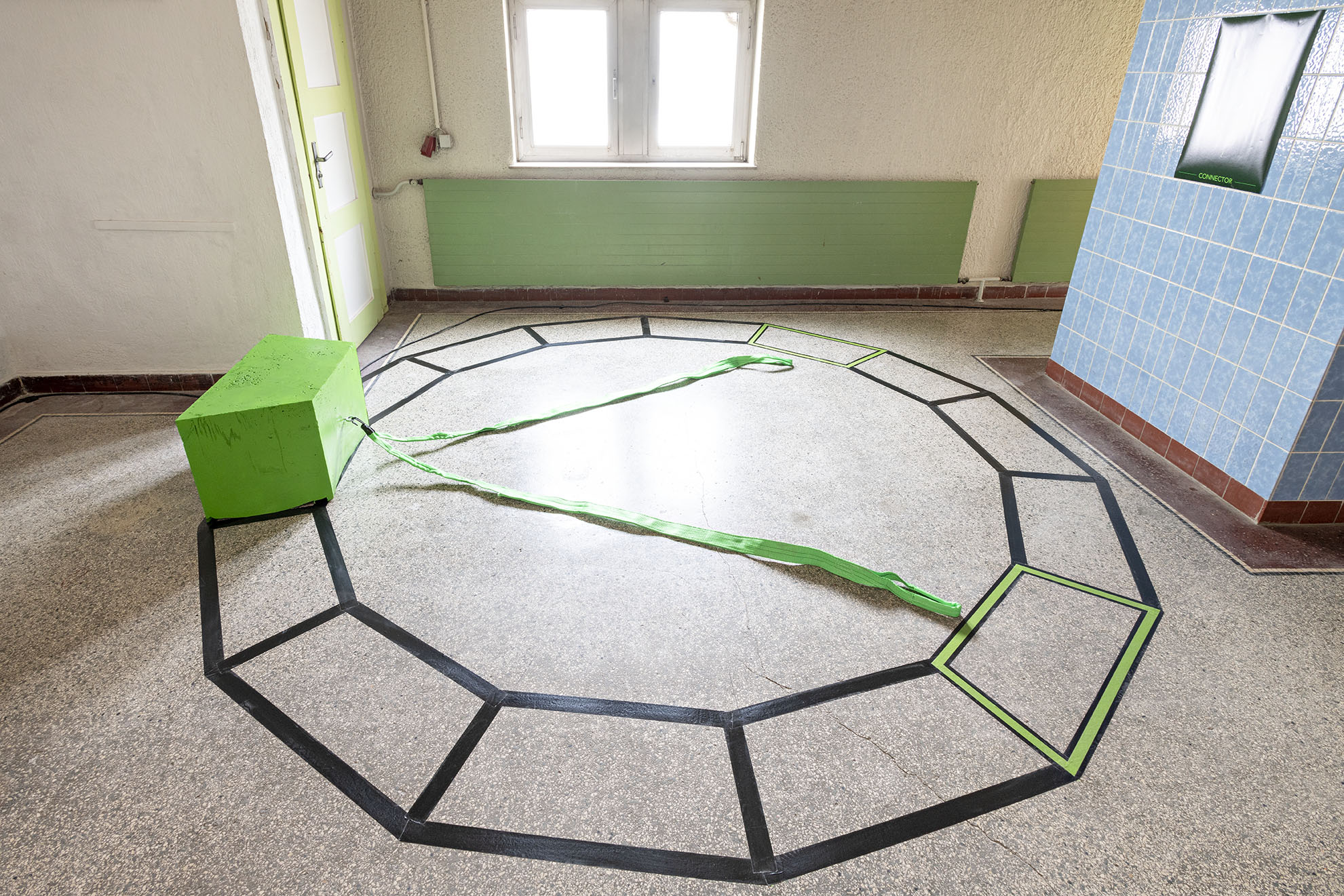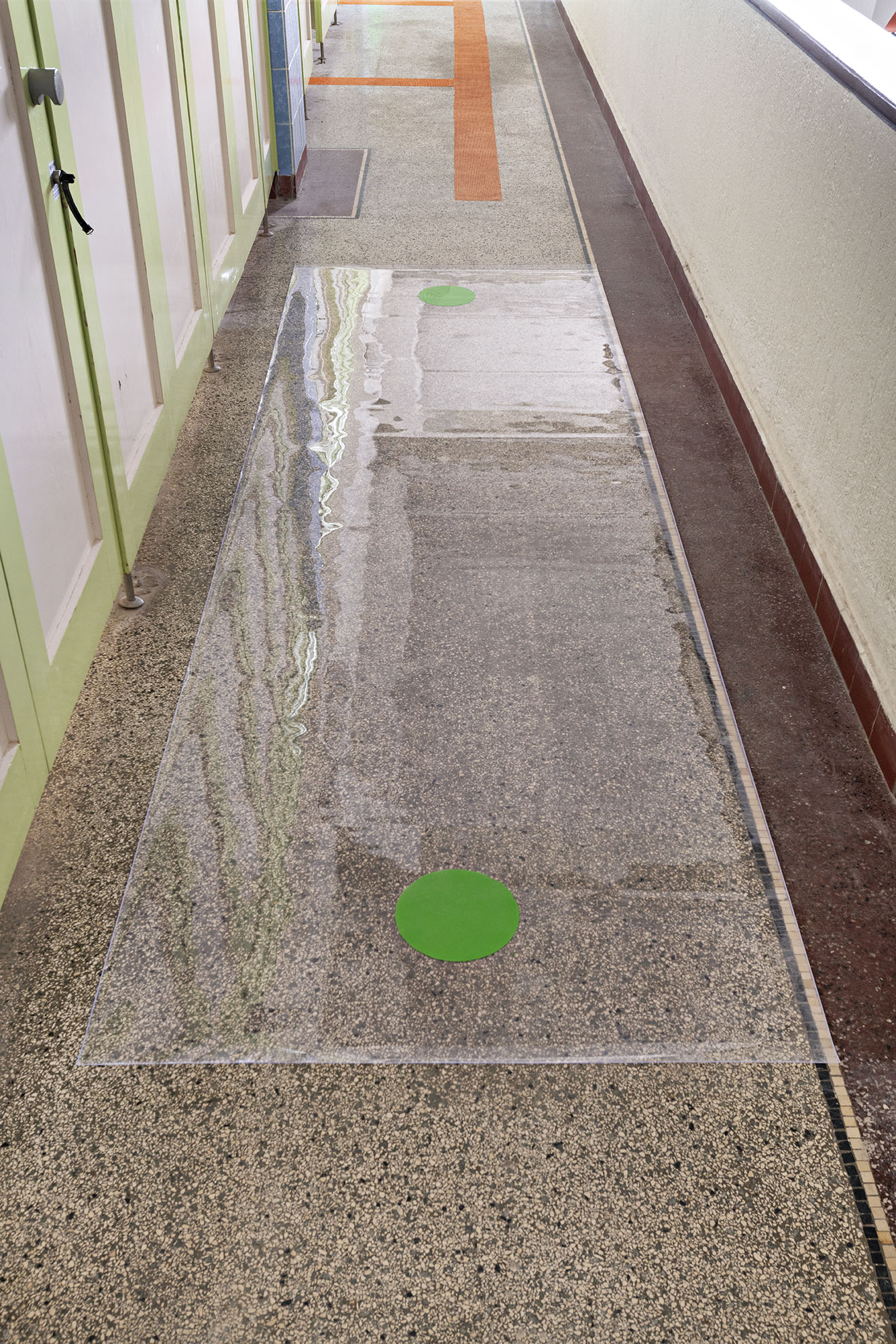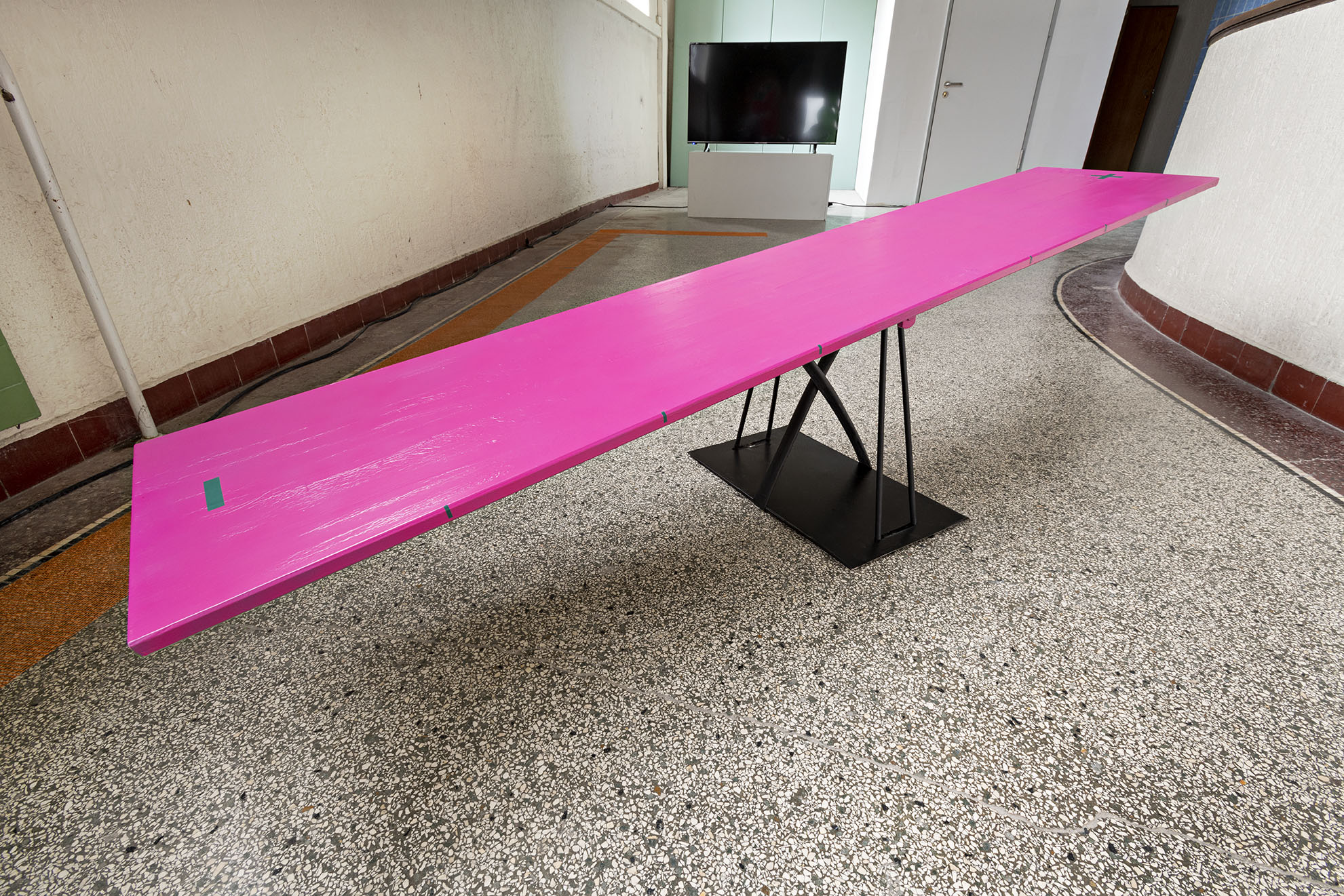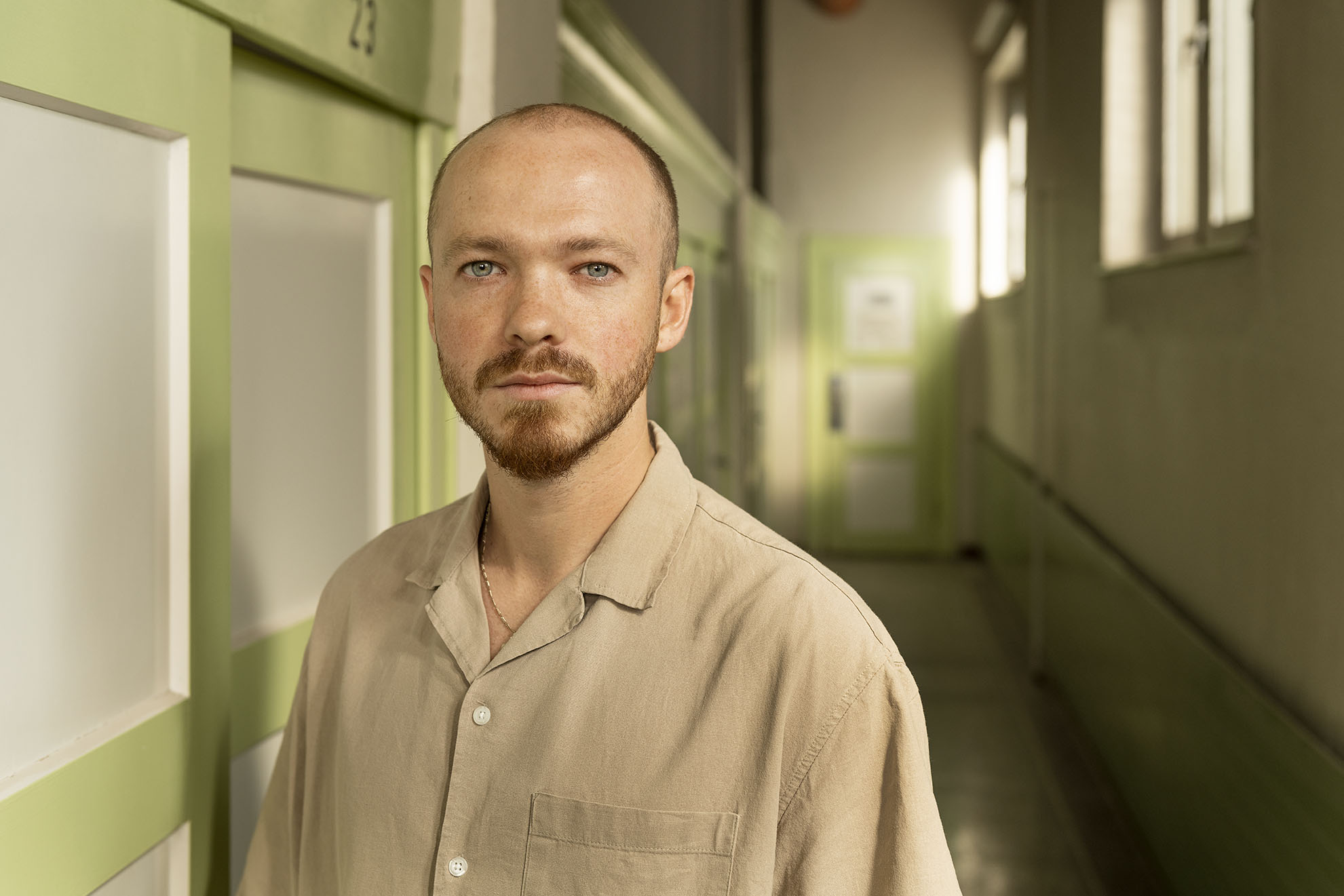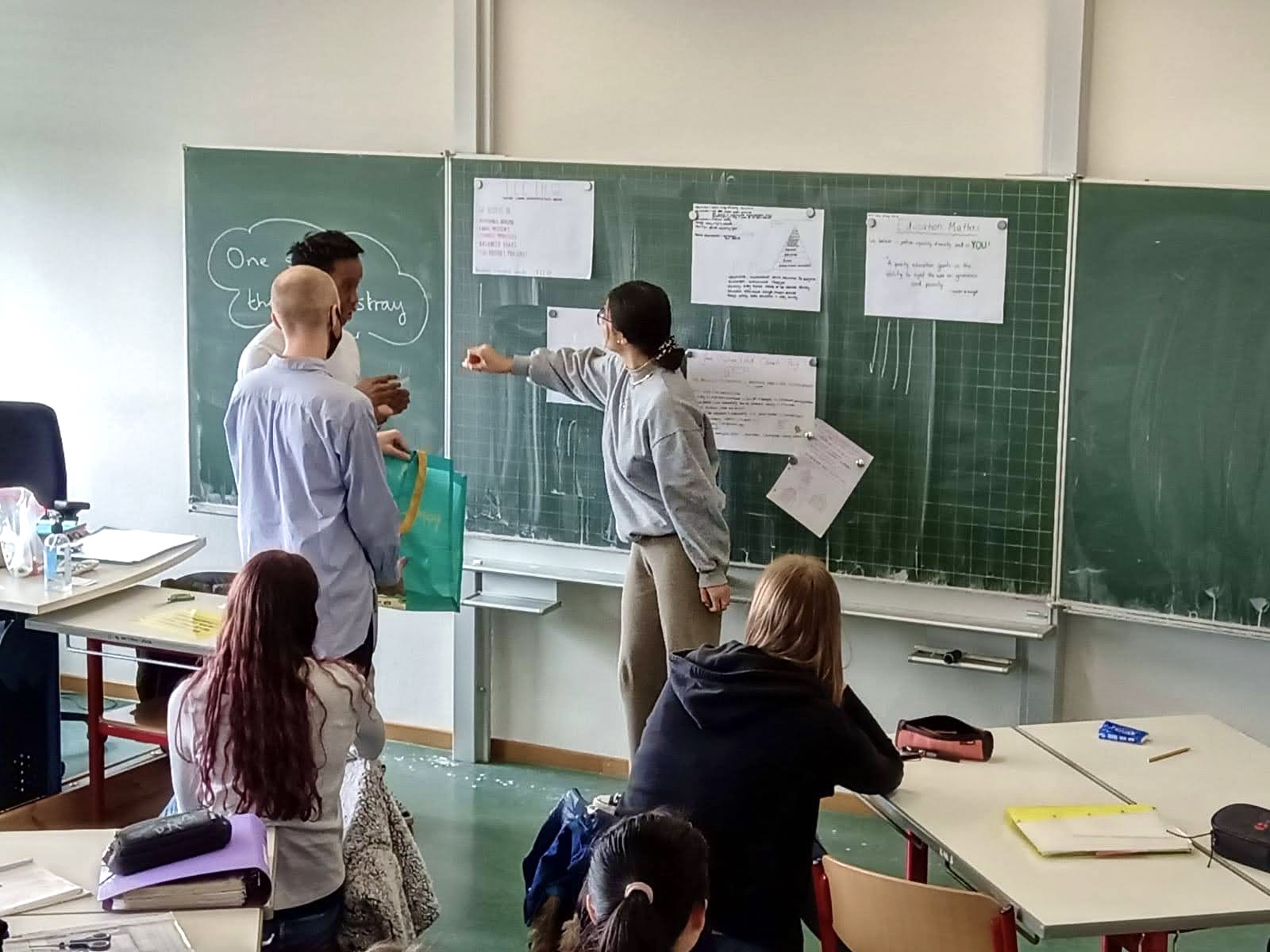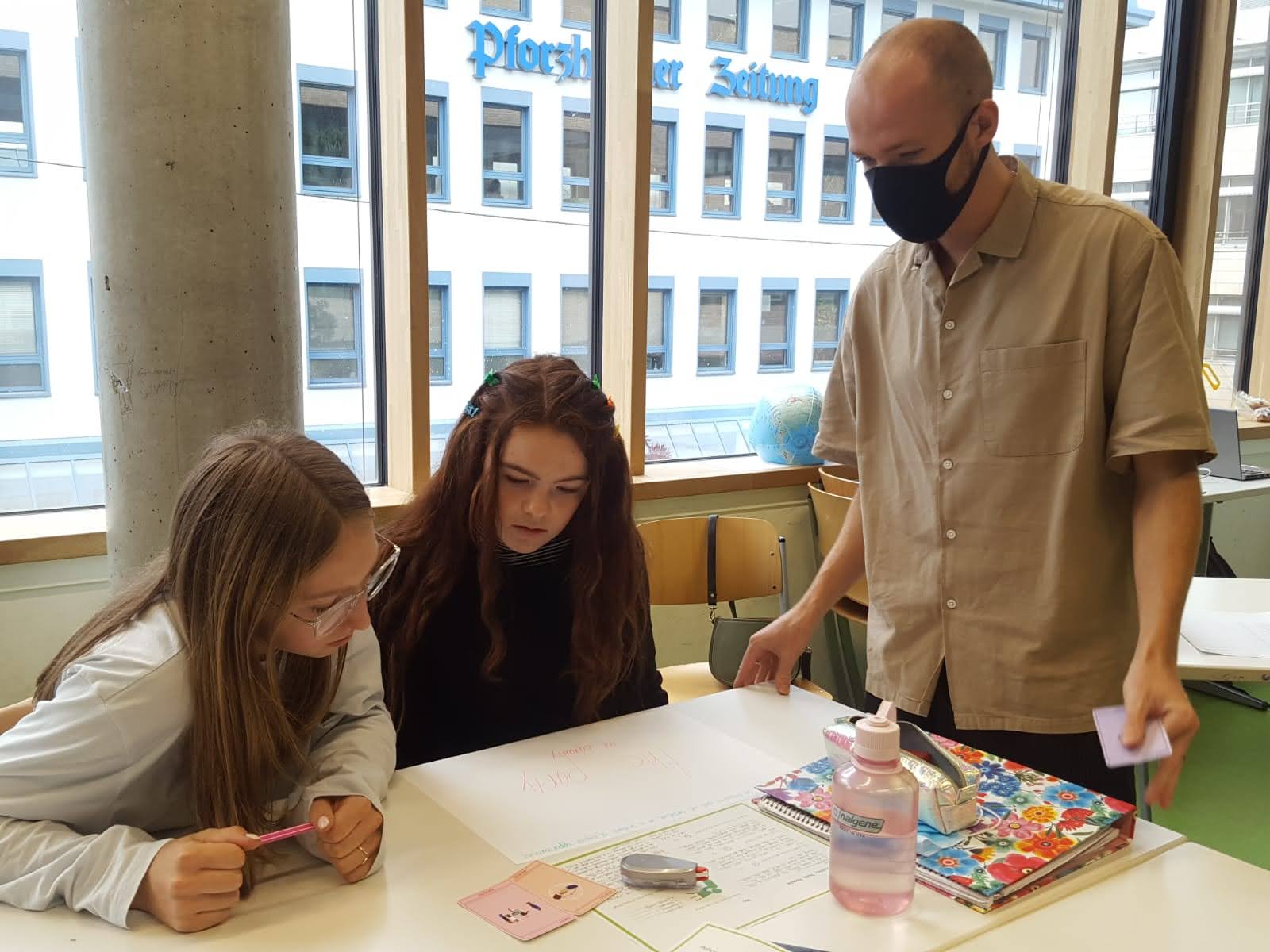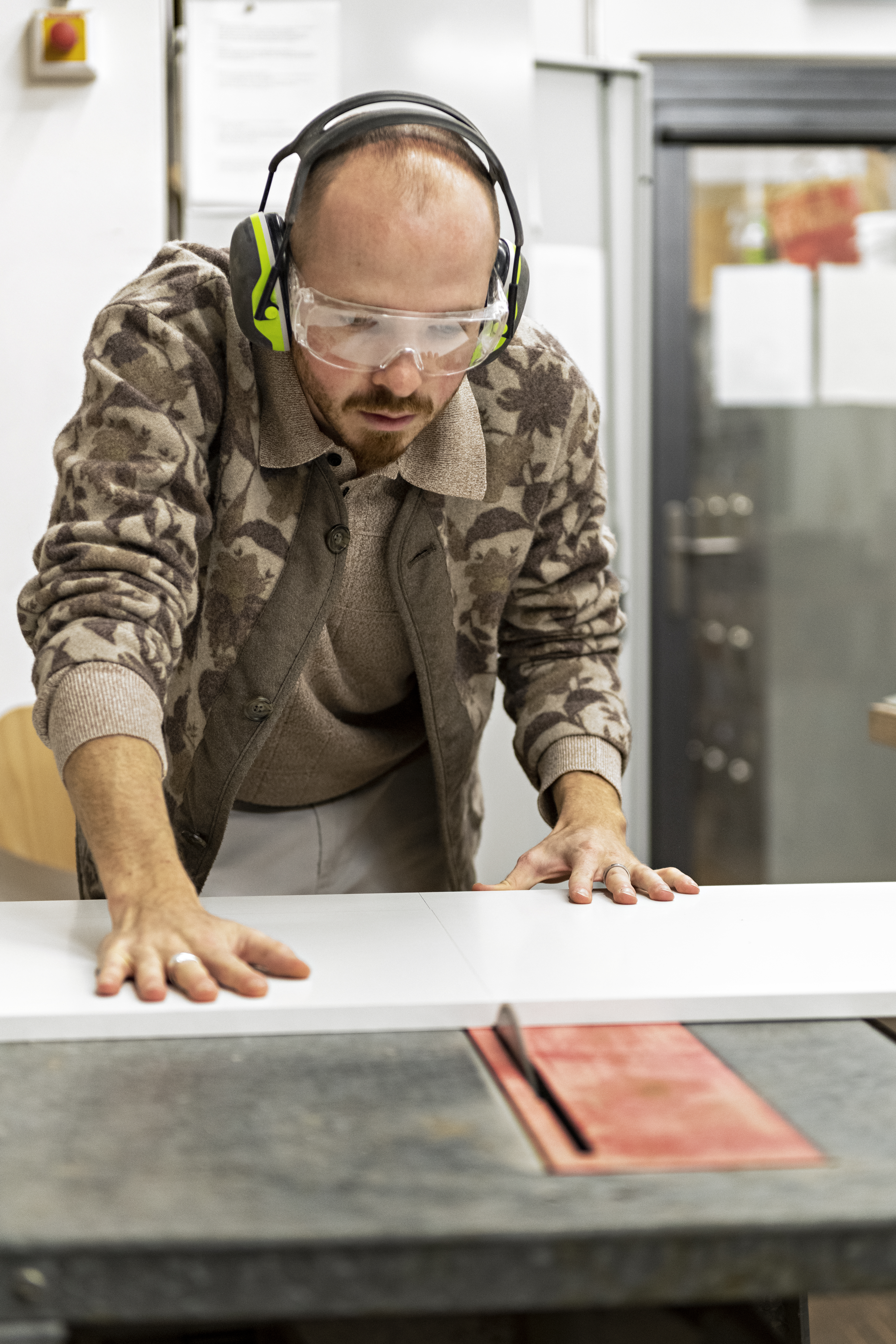To Jaspar Rogers politics is the process of interpreting information to devise a strategy, make decisions and to solve entangled problems. But how do we navigate floods of information in an age of simplification, misinformation, algorithmic validation, and divisive language, and can it be taught? Through workshopping political strategies in schools, Jaspar Rogers identified thinking structures that help children to understand political processes. His »political playground« is the physical manifestation of these thinking structures.
1.The Connector
Once a topic of interest is chosen the connector validates its agenda by presenting its links with other topics. This demonstrates system thinking and can help to expand ones perspective of positive and negative outcomes. Each green block represents one of fourteen policy areas. To use the play tool the participant must physically connect their initial category with as many other blocks as they can. When doing this, the user should consider how changes in the any other block could affect their starting point and visa versa. Once completed, the player should choose one string of connection that they want to focus on and bring it forward to the next game. For instance the user may be interested in climate change but may not have considered the impact that Housing has on the climate.
2. The Shooter
Focused on problem solving, the Shooter continuously generates ideas for strategy or policy with the aim aim of achieving a particular outcome. Then by rationalising and critiquing each hypothetical scenario the shooters idea becomes more refined with each iteration. The shooter is granted ammo for each new idea it comes up with and to pitch a successful idea it must aim to land its shot in the target on the other side of the mat. By going through this process before being allowed to proceed, the player is forced to think more deeply about the multifaceted nature of the problem they have chosen. The solution that the player successfully pitches is then brought forward to the next exercise.
3. The Builder
To build a stable structure that supports its proposal, the builder recognises the risks associated with its ambition and plans from the top down, before building up. This way the foundations are in place to preempt problems at different stages of its political assembly. The green balls represent solutions and each black ring represents a problem that could occur from the solution above it. To release the balls and build their pyramid, the players must recognise 2 problems that could occur from the idea above, then the next ball under that problem represents its solution, and so on. For instance if the players idea was to ban cars from city centres – 2 problems could be: congestion on public transport, and the disregard for people who already have cars and rely on cars for accessibility. The next three balls would then be used to address those issues and the process repeats.
4. The Balancer
Having a variety of concerns and agendas is like a balancing act. The balancer is able to weigh up the different aspects of its ideal scenario and find an equilibrium through compromise. The player may have found that they touched on topics through this process that they didn’t originally connect to their starting point, in this case they should return to the first exercise and connect them now. The seesaw represents the Overton window, a scale of change from, no change in the middle, to radical change on either side. The players should try to balance their blocks in order of time, with the first change they would make at the bottom, whilst considering the scale. This exercise forces players to think of a thorough strategy and weigh up how radical they are willing to be when another topic may be at stake.
